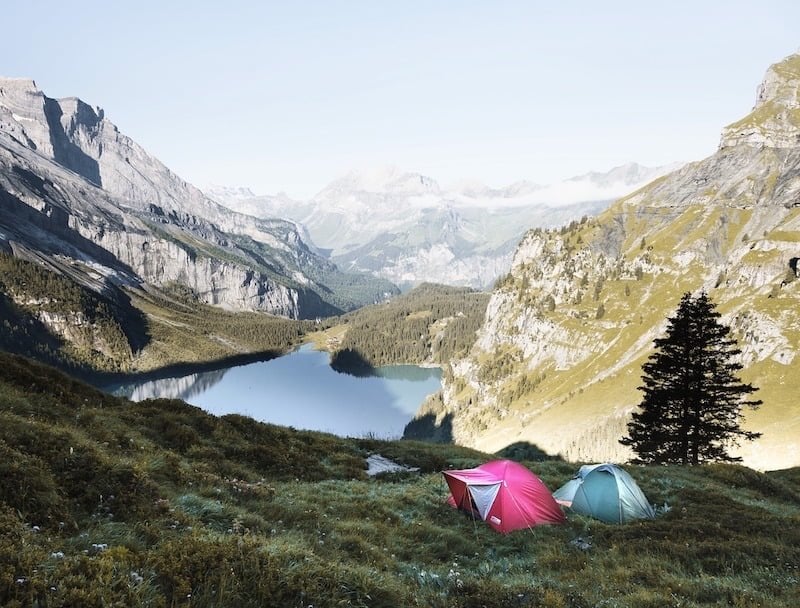Top Tips for Green Travel with Kids
Eco friendly travel with kids can be a fun adventure. The only extra thing you bring along is your family’s sustainable values. Find our top tips for green travel with kids.
For many people, the term Ecotourism brings to mind exotic (and expensive) adventures in far-off places. But, there are sustainable travel options to please every family – regardless of your interests and the ages of your kids.
What is Eco-Travel?
You might be wondering if the term “eco travel” is perhaps an oxymoron. It is true that everything we do has an impact on the environment. It can be difficult to plan a trip without increasing our environmental footprint.
However, keep in mind that your ‘impact’ can be positive as well as negative. A well-planned trip can bring positive benefits to the communities you visit. In fact, tourism provides a much-needed economic incentive for many communities around the world to protect their natural and cultural heritage.
Traveling with your kids is also a wonderful way to expose them to different cultures and allow them to experience first-hand the wonders of the natural world. This can help them develop tolerance, confidence, and an open-hearted love of and interest in the world. These are critical attitudes to foster if our society is ever to learn to live in harmony with the earth. After all, can we really form a bond strong enough to fight for Mother Nature if we don’t experience her beauty and glory first hand?
“Eco travel is full of what educators call teachable moments or, more definitively, unplanned opportunities to explain a concept that has unintentionally captured a child’s interest,” says Irene Lane, president of the eco-travel agency Greenloons.
“Whether it is touring the rainforests of the Amazon, observing blue footed boobies throughout the Galapagos Islands or understanding the water issues that surround the Okavango Delta in Botswana, eco travel is a vacation experience that provides boundless opportunities to teach younger generations about the fragility of ecosystems and the significance of heritage.”
Green Travel With Kids
Travel is an ever-changing, exciting way to spend time with your family. It’s also a truly hands-on way to educate your children. Exposing kids to different ways of life – and literally new horizons – can fuel curiosity and encourage compassion.
Visiting other places is a wonderful way to gain an appreciation for the beautiful natural resources of this planet. I’m sure there’s an argument that it’s much greener to sit in front of a computer and look at images from the cliffs of Santorini or the work-of-art rock formations in the Garden of the Gods.
Yes, that’s a very small carbon footprint assuming you didn’t buy a computer just for that purpose. But can we really form a bond with Mother Nature – a bond strong enough to fight for her – if we don’t experience her beauty and glory first hand?
Your family can strike a healthy balance when it comes to fulfilling your dreams of travel and maintaining your sustainable lifestyle.
Top Eco Travel Tips With Kids
Traveling is also a chance to show your children that being on the road doesn’t have to mean letting go of all the green and eco-friendly choices we make at home.
Don’t make everyone miserable if you’re starving and can’t find local or organic food. You’re on vacation! It’s supposed to be fun. The key is to find a happy balance.
Here are a few tips to help you reduce your impact on the environment when traveling with your kids.
1. Eco-Friendly Ways to Travel
Find the greenest way to get there! Transportation is the biggest part of your travel footprint.
Take a fuel-efficient vehicle
If your destination is within a reasonable driving distance, take your own fuel-efficient vehicle. It may also make sense to rent a more efficient vehicle for the trip.
Small children will enjoy the comfort of their familiar car. And you’ll enjoy not having to lug the car seats through airports and rental car facilities.
Take the train
For a long trip, consider booking a sleeper compartment on the train. Kids love the novelty, and it makes travel a lot more comfortable.
Air travel considerations
Taking a bus or a train can lessen the environmental impact, but sometimes air travel is the only way to get to your destination. If that’s the case, choose a nonstop flight, as a significant portion of carbon emissions come from takeoff and landing.
Take public transportation
Once you arrive at your destination, choose public transportation when it’s available. Find out in advance the most common ways of getting around.
If you are traveling to and within urban centers, consider taking the train or bus. These forms of transportation typically consume half the fuel of flying or driving. And as Corinne McDermott of HaveBabyWillTravel explains, riding them can add to the fun.
Bike, walk, or paddle
Exploring on foot or bike helps you experience your new surroundings firsthand and provides plenty of exercise.
If your location is on water, find out how you can use a kayak or canoe to get from place to place. When our extended family visited St. Maarten, we paddled our inflatable stand-up paddleboards to Pinel Island, a tiny tropical paradise with no roads or cars.
Why not make the journey itself the destination? Besides bike touring, there are lots of other non-motorized options: trips by canoe, kayak, horseback, or even covered wagon!
2. Stay at Eco Resorts, Rentals, or Hotels
With more homeowners and hotels taking advantage of sustainability incentives, it’s fairly simple to find an energy-efficient vacation rental.
Choose a vacation home or hotel suite with a kitchen so you can cook some of your own meals, and if your hotel offers a linen reuse program, take advantage of it.
3. Consider Bike Touring
If you really want to travel green, consider bicycle touring. Bikes are amazingly versatile: they can go places cars can’t, and you can even take them on many trains and buses. Bicycle touring with kids is not as hard as you might think.
If you’re unsure about it, start small, as software engineer and cycling blogger Richard Masoner suggests:
“Among bike people, we have a concept of the S24O or the Sub 24-hour overnight trip. You find a destination within easy biking distance for you and your family, and you don’t even need fancy or expensive touring gear. My family and I did this with inexpensive city bikes and heavy car-camping gear, camping overnight in a nearby state park. In California, many state parks even have camping sites reserved just for those who bike or walk into the site.”
4. Bring Eco Friendly Water Bottles & Snacks
You can’t walk 20 yards on a beach without seeing single use plastic debris. Reusable water bottles are easy to pack on a trip. You can refill them at water fountains or hotel lobbies. Just be sure to wash them with hot water in your room’s sink each night so bacteria doesn’t build up.
At the airport, keep your reusable bottles empty until you’ve passed through security. Fill them up on the other side of the security checkpoint.
Pack your reusable bags in your suitcase so they are ready to head to the store, farmers market, or beach with you. It’s a simple way to avoid plastic bags and make a big difference.
If you have small children who need to snack often, packing your own snacks is essential for avoiding gas station or convenience store food while on the road.
Get the kids involved by planning the snacks. Let them pack what they want from home, and refill them by stopping at a health food store during your trip.
5. Think Local
Show your support for the community you are visiting by eating locally and frequenting the local shops. Look for farmer’s markets and restaurants that showcase local products. Buying locally really does make a positive difference to the places you visit.
Locally owned boutique hotels and local restaurants and markets offer unique tastes and experiences you will never experience elsewhere. Try these ideas to support the local economy as well as traveling sustainably:
- Visit the local farmers market if you’ll be cooking in your rental kitchen.
- Skip carry-out if the food comes in styrofoam or plastic.
- Find food trucks to eat like the locals.
Another way to avoid excess consumption is to plan a vacation at home or a staycation. Many people get so caught up in their daily lives that they never take the time to discover and enjoy the wonders that surround them.
Chances are you have a week’s worth of attractions just a short drive or bike ride away from your home. Why not use your vacation time to visit them?
Visit your local tourist center to find more eco-travel with kids’ inspiration.
This is a wonderful option for sensitive or high-need children who get overstimulated easily. You can even plan a rest day in the middle of the week where you don’t go anywhere, just to help them recharge.
6. Leave No Trace Camping
Camping is typically a nature-rich experience, and you can make it even greener by teaching your kids to follow the Seven Principles established by the Leave No Trace Center for Outdoor Ethics:
• Plan ahead & prepare
• Travel & camp on durable surfaces
• Dispose of waste properly
• Leave what you find
• Minimize campfire impacts
• Respect wildlife
• Be considerate of other visitors
Wherever you go with your kids, use it as an opportunity to teach respect for the environment and for others. Some of these principles are specific to camping.
If you have teens, it is great to get them involved in camping, and they can help with all of these principles too. Challenge your older children to come up with alternatives that apply to non-camping situations, too!
National parks are wonderful for camping to practice Leave No Trace ethics. Between them, the U.S. and Canada boast nearly 100 national parks!
They offer spectacular landscapes and awesome outdoor experiences for families of all ages. Many national parks require reservations for camping and lodging, so plan your trip in advance.
7. Try Glamping
Not a hardcore camper? No worries. Glamping (glamour + camping) resorts offer a cushy alternative – the outdoor experience wrapped in luxury.
Staying in a yurt, treehouse, or other cool structure with ready access to running water and other necessities is a relaxing experience the whole family can enjoy.
Glamping is a wonderful way to include special needs families or those with very young kids. For more information on glamping visit InspiredCamping.com.
8. Consider a Farm or Ranch Stay
Imagine your kid’s faces as they collect their own eggs to eat for breakfast, pull carrots from the farm garden, eat blueberries right off the bush, then race to the creek running through the property to splash and wash off messy hands.
Farmstays offer families a chance to experience life in the country, to understand where and how your food is grown or raised, and to connect families with the natural world, with farmers, and ultimately with each other.
FarmstayUS.com offers a searchable database of farm and ranch stays nationwide. These experiences take sustainable travel to a whole new level!
Eco-Travel with Kids: Find a Balance
Of course, you want your vacation to be as eco-responsible as you can make it. But keep in mind that stress is unsustainable, too!
Do what you can to plan a trip that supports your family’s values and expectations – whether it’s:
- A positive social impact on the local community
- The availability of good food
- Access to natural areas
- Availability of shuttles, bicycles, public transit, and/or safe walking paths
- Green housekeeping practices
Do your own research by calling ahead and reading third-party ratings and social media reviews. Once you make the decision that feels the best to you, let go of the rest.
David Leventhal, owner of the Playa Viva hotel in Guerrero, Mexico, agrees. “My number one piece of advice is to find a place that allows for kids to interact with nature and then do NOT try to schedule, he says.
“We are so prone these days to schedule every moment of our kids’ lives, but if you take them to the right Eco location…the kids will become kids again and their sense of curiosity and especially around nature will emerge.”
Happy travels!



